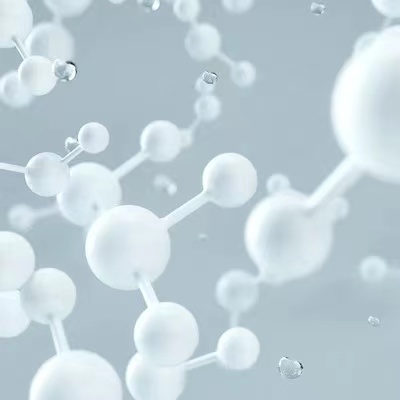创新背景
酶是许多药物的靶标。如果科学家能够预测它们的功能,那么他们就可以用小分子抑制这些功能——在某些情况下可以治疗疾病。这项研究将是至关重要的,以创造一个整体的画面,是提供一个更全面和完整的了解生物学和健康。
创新过程
研究人员研究了来自一种植物的整个酶家族。他们结合相应基因的酶的高通量表达,然后通过定量、无标记质谱技术筛选它们的酶活性。对酶主要序列的简单分析并不能给出真正的活动预测模式,但当与牛津大学机器学习小组的人工智能技术相结合时,标准的化学描述符可以推导出一个强大的预测系统。

牛津大学的化学教授本·戴维斯表示,这种方法不是‘黑匣子’,而是把成功的预测和具有化学和生物意义的预测的原因反馈给化学家/生物学家。这反过来也让我们能够研究出哪些酶可以用于合成,预测不同物种(甚至是细菌)的酶的活性,并研究出如何在我们无法预测的建议的基础上以一种新的方式改造酶。这是一个非常强大的发现引擎。它将为假设检验提供可能性。因为酶的试管进化获得过诺贝尔化学奖,将人工智能应用于酶以增进理解将推动该领域不断向前发展。

牛津大学信息工程机器学习教授斯蒂芬·罗伯茨(Stephen Roberts)表示,人类生活在一个大数据和大模型的时代,但不一定需要大知识或大洞察力。事实上,许多复杂的、性能良好的模型的本质掩盖了成功的细节,导致了缺乏现成可解释性的“黑盒”解决方案。与之形成鲜明对比的是,科学方法的核心是洞察抽取。这项研究已经表明提供透明度和洞察力的模型仍然能够推动科学进步。
创新价值
这一重大进展使成功的蛋白质催化剂活性预测成为可能,这对包括医学研究在内的许多领域都有影响。这是一个比模拟小分子催化剂更具挑战性的领域,而小分子催化剂一直是机器学习/化学领域的顶峰。
创新关键点
研究人员结合相应基因的酶的高通量表达,然后通过定量、无标记质谱技术筛选它们的酶活性。对酶主要序列的简单分析并不能给出真正的活动预测模式,但当与牛津大学机器学习小组的人工智能技术相结合时,标准的化学描述符可以推导出一个强大的预测系统。
Artificial intelligence was used to predict enzyme activity
The researchers studied an entire family of enzymes from one plant. They combined high-throughput expression of the enzymes of the corresponding genes and then screened their enzymatic activities by quantitative, label-free mass spectrometry. Simple analysis of major enzyme sequences does not give true prediction patterns of activity, but when combined with AI techniques from Oxford's machine learning group, standard chemical descriptors can derive a powerful prediction system.
Ben Davies, professor of chemistry at Oxford University, said the method is not a 'black box' but gives chemists/biologists the reasons for successful predictions and predictions with chemical and biological significance. This in turn allows us to work out which enzymes can be used for synthesis, to predict the activity of enzymes in different species (even bacteria), and to work out how to engineer enzymes in a new way based on suggestions we can't predict. This is a very powerful discovery engine. It will provide possibilities for hypothesis testing. Given the Nobel Prize in chemistry for the in vitro evolution of enzymes, applying artificial intelligence to enzymes to improve understanding could be a very powerful next frontier.
Stephen Roberts, professor of machine learning in information engineering at Oxford University, said humans live in an age of big data and big models, but not necessarily big knowledge or insight. In fact, the nature of many complex, well-performing models obscures the details of success, resulting in a lack of off-the-shelf interpretable "black box" solutions. In sharp contrast, the scientific method is, at its core, about insight extraction. This research has shown that models that provide transparency and insight can still advance science.
智能推荐
创新通过HDCR酶结构转化储存二氧化碳
2022-08-04探究丝状HDCR酶的结构和原理,开发二氧化碳转化储存的新方法。
涉及学科涉及领域研究方向利用细菌可将二氧化碳转化为化学品
2022-08-04利用细菌菌株开发气体发酵工艺,回收二氧化碳制作丙酮和异丙醇。
涉及学科涉及领域研究方向新型光激活涂层用于杀死细菌
2022-08-04伦敦大学学院(ucl)领导的研究团队开发出了一种可以在低强度的光线下激活,杀死金黄色葡萄球菌和大肠杆菌等细菌的新型涂层。
涉及学科涉及领域研究方向创新开发新型工具加快酶的研究速度
2022-08-17斯坦福大学的研究人员开发了一种新的工具可以让数千个微小的实验同时在一个聚合物芯片上进行,这将使科学家比以往任何时候都更快、更全面地研究酶。
涉及学科涉及领域研究方向